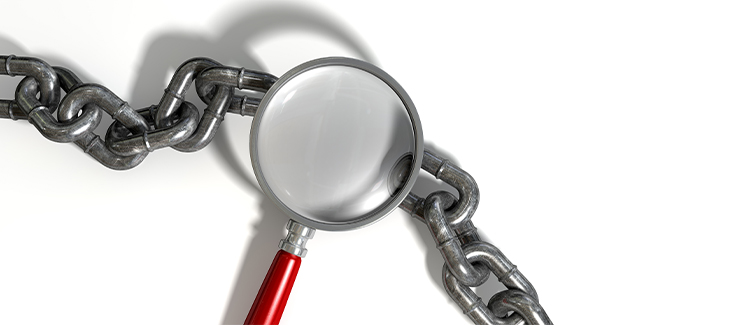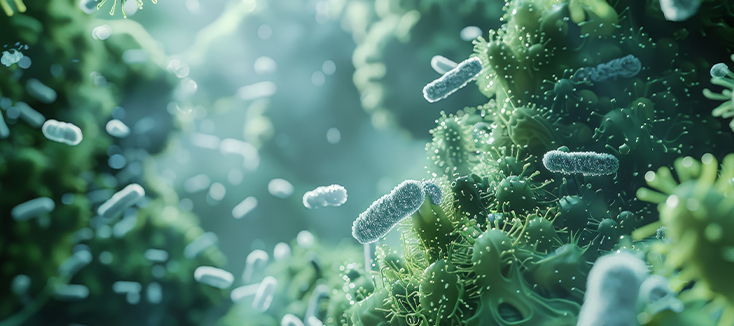Patient safety is the cornerstone of quality healthcare, and ensuring that reusable medical devices are free from harmful microorganisms is essential to accomplishing that mission. However, one of the most persistent and insidious threats to safe ultrasound use is the formation of biofilm, a microscopic enemy with serious consequences. For devices like transesophageal echocardiogram (TEE), transvaginal, transrectal, and surface probes, biofilm formation causes costly equipment damage and premature replacement and can lead to adverse patient outcomes.
Biofilm is more than just a hygiene issue; it is a clinical and operational challenge that healthcare facilities must actively work to prevent. The key lies in recognizing that manual cleaning is often not good enough. It is inconsistent and labor-intensive, leaving devices vulnerable to incomplete decontamination and patients vulnerable to contracting healthcare-associated infections (HAIs). Fortunately, automated cleaning and disinfecting solutions like TEEClean® Automated TEE Probe Cleaner Disinfector and Ethos® Automated Ultrasound Probe Cleaner Disinfector provide reliable, standardized ways to combat biofilm and preserve patient safety.
What is Biofilm?
According to The American Journal of Infection Control, “Biofilms are surface-attached communities of bacteria embedded in an extracellular matrix… made up of extracellular polymeric substances secreted by the cells dwelling inside.” Biofilms are complex colonies of microorganisms such as bacteria, fungi, and other pathogens that attach themselves to surfaces and develop a protective barrier. This makes them extremely difficult to remove and highly resistant to disinfection. Once a biofilm has formed on a medical device, it becomes nearly impossible to eliminate without causing damage.
For TEE, transvaginal, transrectal, and other endocavity ultrasound devices, the risk is severe. The Centers for Disease Control and Prevention (CDC) has noted that biofilm presents a significant risk, especially for immunocompromised patients who cannot fight off infections as readily. If a probe becomes colonized by biofilm, it may require extensive manual cleaning, which can compromise the probe's integrity and cause damage that either needs repair or a complete replacement — all costly and disruptive.
When dealing with biofilms, prevention isn't just better than cure; it's the only effective strategy.
How Biofilm Forms on Probes
Biofilm formation doesn't happen instantaneously, but it begins when a soiled device is exposed to the right conditions: moisture, body fluids, warmth, and time. For example, removing a TEE probe from a patient's esophagus leaves moisture and organic matter on the probe, creating an ideal breeding ground for microorganisms. If the reprocessing procedure is delayed, microorganisms can begin forming biofilm. Once formed, the film shields bacteria from high-level disinfectants, reducing the effectiveness of even the most rigorous cleaning efforts.
The Role of Cleaning in Biofilm Prevention
According to the Spaulding classification system, reusable devices that come into contact with mucous membranes, such as TEE, surface, and endocavity probes, are classified as semi-critical. These devices must undergo high-level disinfection between patient uses. But crucially, high-level disinfection is only effective if the probe is thoroughly cleaned first. Any blood, mucus, or tissue left on the probe can shield microorganisms from disinfectants and create the perfect environment for biofilm to form. Many facilities fall short here. Manual cleaning steps are prone to human error, variation in technique, and inconsistent documentation. Staff shortages, time constraints, and training gaps only amplify the risk. Even with the best intentions, manual cleaning often fails to deliver the consistency needed to prevent biofilm formation.
How Automation Can Help
Automating cleaning and disinfection reduces the risk of biofilm formation and ensures standardization, compliance, and traceability. TEEClean and Ethos are explicitly designed to address these challenges.
TEEClean, the first and only FDA-cleared automated cleaner disinfector for TEE ultrasound probes, performs both the cleaning and disinfection steps in a single, closed-cycle system. The device eliminates the need for manual cleaning before disinfection, ensuring that every TEE probe is reprocessed the same way every time without compromising effectiveness or probe integrity.
Similarly, Ethos provides automated cleaning and high-level disinfection for endocavity and surface ultrasound probes, such as those used for transvaginal and transrectal procedures. The soiled probe is placed directly into the system after a wipe is used to remove the cover or condom, where it is cleaned, disinfected, and rinsed—all with minimal human intervention.
These systems also track every cycle and print detailed reprocessing reports, making it easier for facilities to demonstrate compliance with infection prevention protocols.
Best Practices to Keep Biofilm at Bay
To reduce the risk of biofilm:
- • Act fast: Perform point-of-use cleaning immediately after probe removal using enzymatic sponges, like TEEZyme Enzymatic Sponges.
- • Avoid delays and handle with care: Avoid damaging the probe during use or transport. Safely transport the soiled probe to a reprocessing area promptly using the TPorter® TEE Ultrasound Probe Transportation Case or the Probe Valet™ Transport Bag.
- • Automate where possible: Use FDA-cleared automated reprocessors to ensure consistent and effective cleaning and disinfection.
- • Dry thoroughly: Any residual moisture after the disinfection cycle can accelerate biofilm formation. Quickly dry the probe with a non-abrasive, gamma-irradiated cloth, like QwikDry® Ultrasound Probe Drying Cloth.
- • Document everything: Maintain clear records of every reprocessing cycle for traceability and audit readiness.
Biofilm isn't just a cleaning challenge. It threatens patient safety and is a logistical nightmare. By automating the cleaning and disinfection of ultrasound probes, healthcare facilities can dramatically reduce the risk of biofilm formation, ensure compliance with infection control standards, and safeguard their patients and equipment.


